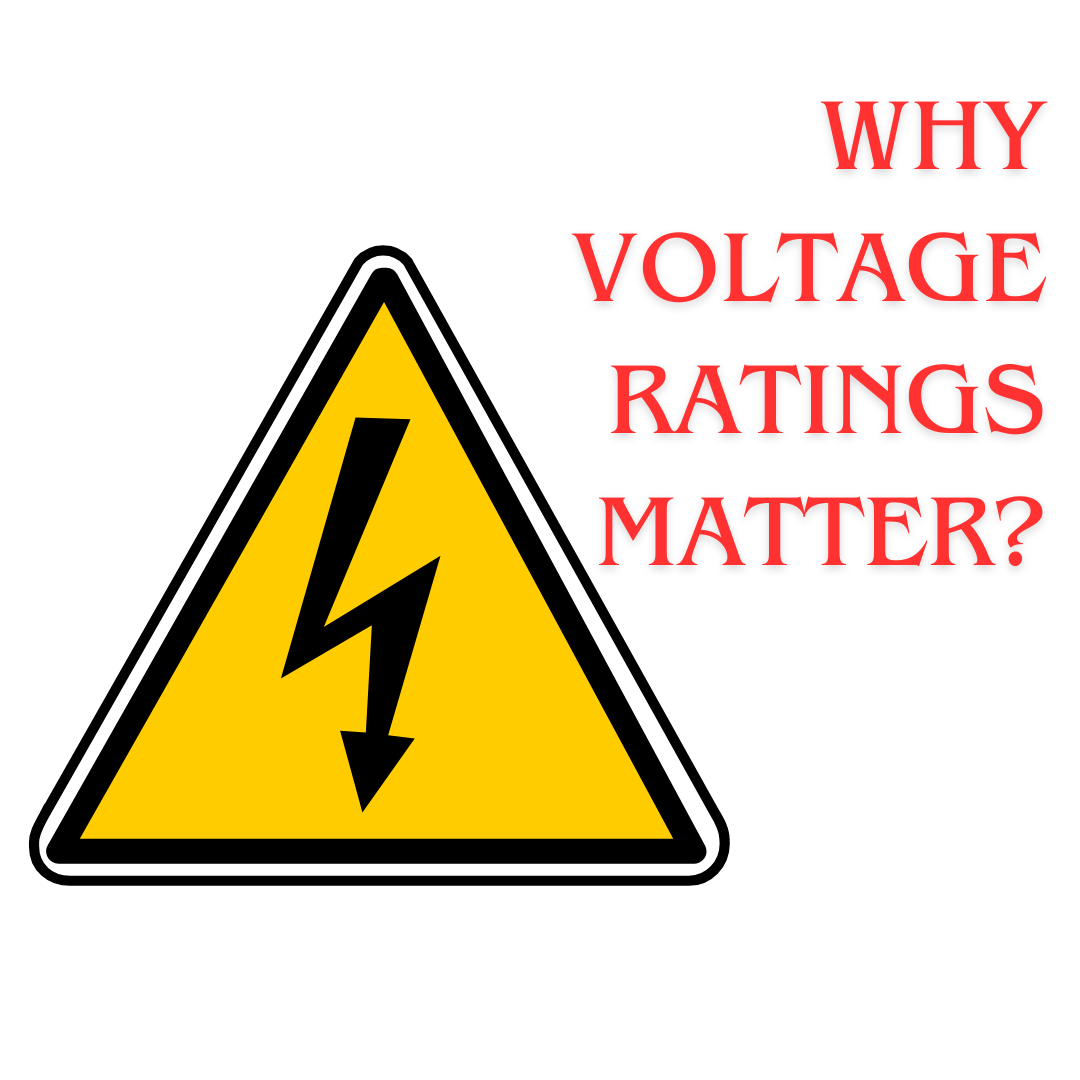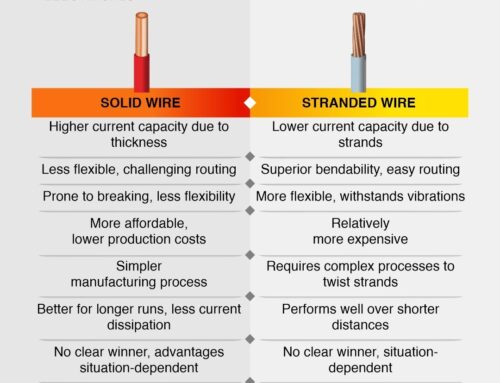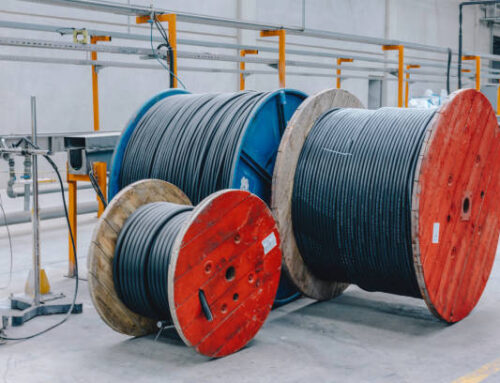The Significance of Understanding Electrical Cables
Electrical lines are the foundations of modern life—powering everything from houses to large industries. Choosing the correct cable means complete safety, efficiency and longevity. Yet choosing the right one can be overwhelming due to the abundance of technical jargons like voltage reading, amperage capacity and arrangements.
Whether you are replacing the wiring in your house or taking on a challenging industrial project, understanding electrical cable specifications is essential. Having a basic awareness of the situation might help you avoid costly errors and potential dangers. With the help of our guide, which will concisely and clearly break down everything you need to know, you can choose your cable much more easily.
Electrical Cable Voltage Ratings Explained
What is Voltage Rating?
Voltage rating refers to how much voltage a cable can withstand without causing any hazard. Simply put, it outlines the maximum amount of “electrical pressure” a cable can handle before it can no longer hold. The voltage rating is critical since failure to adhere to the correct value can lead to burning, breakdown or even cause a fire.
Cables are classified based on whether their function thrusts them into the low, medium or high voltage rating. For example, in household wiring, low voltage is involved especially in the range of up to 1,000 volts. In industrial systems, medium source or high cable rating is utilized because more heavy loads are implicated. Understanding specific low-voltage installation techniques can help in maximizing safety in home installations.
Mahendra Fact File: The high voltage cables and accessories market is on a roll! Valued at USD 37.5 billion in 2022, it’s projected to hit USD 54.4 billion by 2030. This boom is largely fueled by the push for renewable energy, with an expected global increase of nearly 4,500 GW in renewable capacity.
Types of Voltage Ratings
| Voltage Category | Voltage Range | Use Cases |
| High Voltage (HV) | 36 kV to 220 kV | Long-distance transmission of electricity from power generation sources (e.g., wind farms, hydroelectric plants) to major transformer substations |
| Medium Voltage (MV) | 1 kV to 35 kV | Power distribution to large consumers (factories, hospitals) |
| Low Voltage (LV) | Less than 1 kV | Localized power distribution for homes, businesses, and general electronic appliances |
Why Cable Voltage Matters?
Choosing the wrong voltage rating is like trying to inflate a balloon with more air than it is capable of holding —it will either pop or stretch beyond its capacity. Using a cable with too low a voltage rating can cause it to overheat, damaging the insulation and increasing the risk of fire. On the flip side, cables rated for much higher voltage than necessary can be inefficient and unnecessarily expensive. It’s all about striking the right balance.
The Consequences of Mismatch
Undervoltage:
- The amperage rises—causing components to overheat and melt
- Malfunctioning of appliances due to insufficient power
Overvoltage:
- Appliances operate faster than intended—reducing their lifespan
- Causes electrical components, like wires and bulbs, to overheat, burn out, or even catch fire
Amperage Capacity of Electrical Cables
Defining Amperage Capacity
Amperage capacity, also known as “ampacity”, refers to the maximum amount of electrical current a cable can carry without overheating. The larger the cable, the higher the amperage it can handle. Think of a cable like a highway—more lanes mean more cars can travel at once. Similarly, thicker cables allow more current to flow through them safely.
Now, how do you figure out the right size? That depends on the current load you’ll be running through the cable. There are charts and calculators that can help with this, but the general rule is: the more current (measured in amps) you need, the thicker the cable should be.
Factors Influencing Amperage Capacity
- Cable Material: Copper cables tend to have a higher ampacity than aluminium because copper is a better conductor of electricity.
- Ambient Temperature: Higher temperatures lower a cable’s ampacity, as heat affects current flow. Ampacity is rated at 30°C, so adjustments are needed when temperatures exceed this to prevent overheating.
- Insulation Type: Some types of insulation can handle higher temperatures, thus allowing the cable to carry more current safely.
- Bundling: If cables are packed closely together, they generate more heat, which can reduce ampacity. Space and ventilation are key to maintaining optimal performance.
Electrical Cable Conductor Configuration Guide
Types of Conductors
Electrical cables can come with different types of conductors, typically made from copper or aluminium. Here’s a quick comparison:
- Copper Conductors: Highly efficient at conducting electricity, these are often used in residential and commercial applications. Copper is durable and resistant to corrosion, but it can be more expensive.
- Aluminium Conductors: Lighter and cheaper than copper, aluminium is often used for high-voltage transmission lines. However, aluminium is less efficient, so larger cables are required to carry the same amount of current as copper.
Conductor Arrangements
Conductor configuration refers to how the individual wires inside a cable are arranged. The arrangement affects flexibility, heat dissipation, and how well the cable handles high currents. The arrangement of conductors in electrical power systems can vary depending on whether it’s a single-phase or double-phase system.
Single-Phase Circuit
- Horizontal Layout: Conductors are positioned side by side.
- Vertical Layout: Conductors are stacked one above the other.
Double-Phase Circuit
- Designed for applications requiring two phases, double-phase circuits provide more balanced power distribution compared to single-phase systems.
- Typically used in smaller industrial settings or specific distribution networks.
Conclusion
Choosing the right electrical cable goes beyond just picking a wire—it’s about understanding crucial factors like voltage ratings, amperage capacity, and conductor configurations. These elements play a vital role in ensuring the efficiency, safety, and long-term reliability of any electrical system. Making informed choices leads to improved performance and reliability, whether you’re dealing with residential wiring or industrial installations.
Mahendra Electricals offers a wide range of cables and electrical products, including the Apar Range of Cable Solutions, which include durable options like the MV XLPE cables. Our offerings are designed to meet various industry needs, covering everything from amperage capacity and cable sizing to switches, accessories, and insulated wires.
FAQs
- How do I choose the right voltage rating for an electrical cable?
Choose a voltage rating based on your application needs—residential wiring (low voltage), industrial applications (medium voltage), or large-scale electrical systems (high voltage).
- What factors affect the amperage capacity of electric cable?
Cable material, ambient temperature, insulation type, and bundling, all influence amperage capacity.
- What is the best conductor configuration for my application?
For flexibility, go with stranded conductors; for more durable, stationary setups, solid conductors are ideal.
Source Links:
- https://cc-techgroup.com/what-is-voltage-rating/
- https://www.wireandcabletips.com/why-should-one-worry-about-voltage-drop/
- https://iopscience.iop.org/article/10.1088/1742-6596/2319/1/012009/pdf#:~:text=If%20the%20voltage%20is%20too,will%20shorten%20the%20service%20life.
- https://www.sycor.com/blog/post/Understanding%20Cable%20Ampacity%20Charts
- https://tr.prysmian.com/en/media/technical-article/conductor-types-in-cables#:~:text=Low%20voltage%20indoor%20installation%20cables,core%20aluminium%20conductors%20are%20used.





